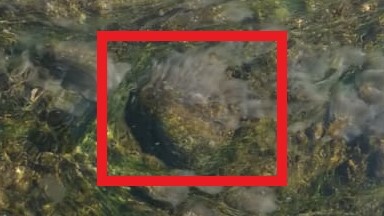Purpose
Detect and map this visual sign of sewage entering rivers, streams or lakes that we are interested in protecting. This gray hair is nothing more than filamentous bacteria that grow in water with a high accumulation of organic matter 💩. To read more in detail about its aspect go to the page 108 of this document
Necessary materials
- photographic camera 📷
- notebook and pencil 📝
- gps 📍
- Internet connection 📶
Step 1 👀
When you are in a river, lagoon or beach pay attention to the presence of water inlets. Examples of these can be small streams, ditches or pipes that discharge water to the aquatic environment of your interest.

Step 2 🔍
Observe the aspect of the water that enters.
Is gray hair (filament) visible at the bottom of the water inlet?

Does it have a disgusting smell?
Is toilet paper seen coming in?
Are excrements visible in the water inlet?
Step 3 ✔️
In case you have found gray "hair" and any of the previous questions have been a yes, record:
- Date and Time 📅 🕐
- site coordinates 📍
- take pictures of what you see 📷
Step 4 ✅
With the information collected, complete the following form link. Your data will be available online for other users to view and you will be able to see other sites where gray hair has been found in drains entering water bodies.
Step 5 (optional) 📞
If you have observed gray "hair" in drains to bodies of water, contact your state environmental protection agency to share your evidence with them, perhaps they can tell you if the drain is illegal and if not, explain what it is for. due to the phenomenon of gray "hair".
Bibliography
https://www.re-sources.org/wp-content/uploads/2019/11/Water-Reporter-manual-final-2019-08-26-copy.pdf
https://www.mywatersheds.org/illicit-discharges
https://www3.epa.gov/npdes/pubs/idde_manualwithappendices.pdf

0 Comments
Login to comment.